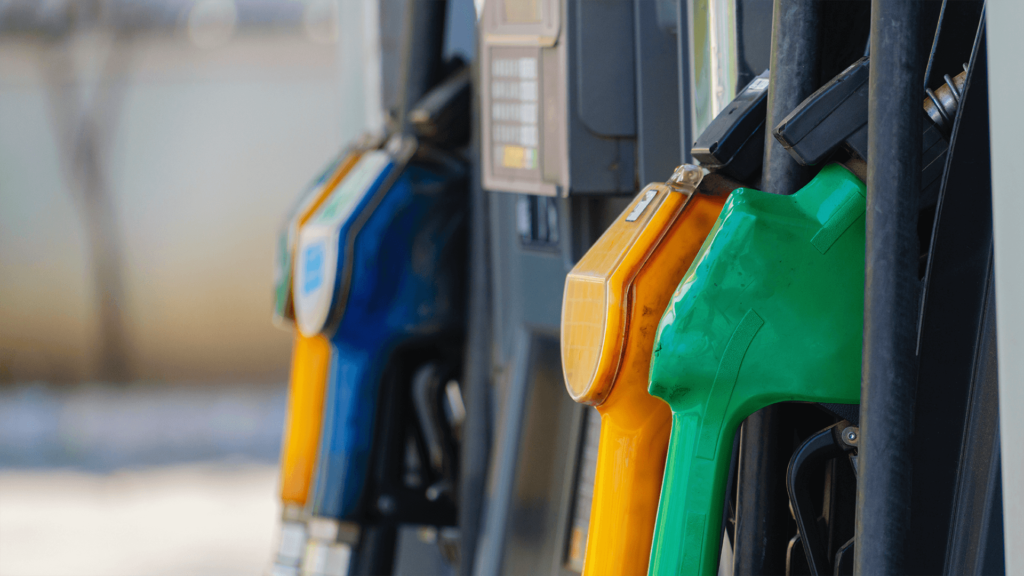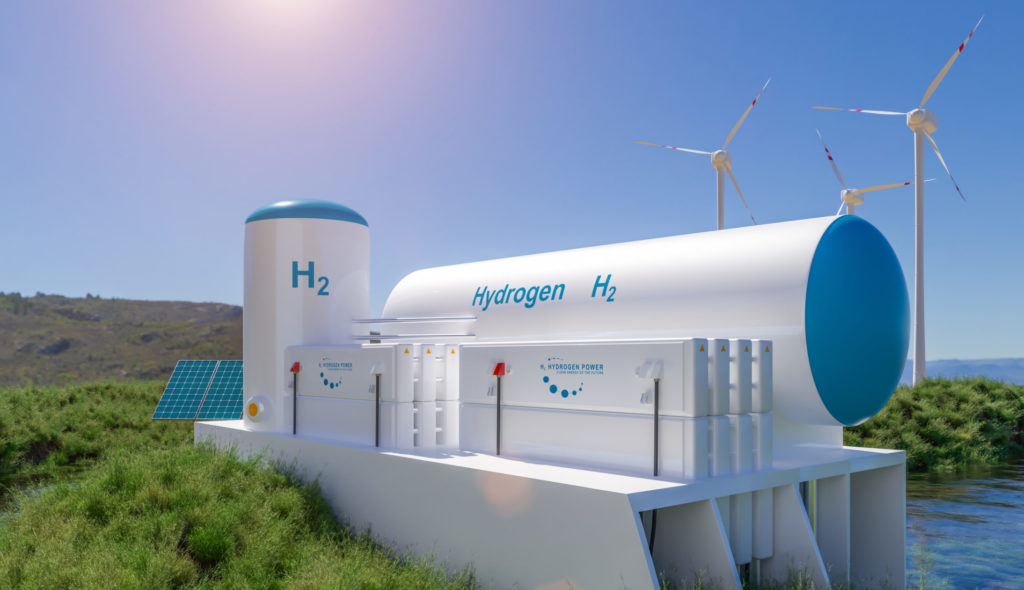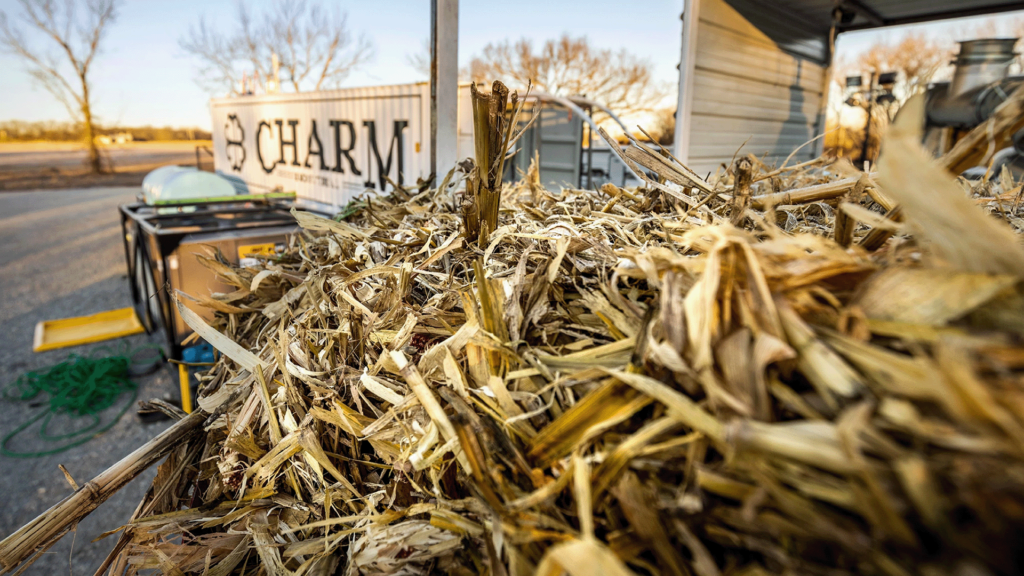Climate Now Episode 89
March 6, 2023
Low carbon fuel standards: what, why, and how?
Featured Experts

Colin Murphy
Policy Director, UC Davis Policy Institute for Energy, Environment, and the Economy

Colin Murphy
Policy Director, UC Davis Policy Institute for Energy, Environment, and the Economy
Colin Murhpy is the Policy Director at the Policy Institute for Energy, Environment, and the Economy at the University of California Davis. He holds a Phd in Transportation, Technology and Policy from UC Davis.
In this Episode
On February 15, 2023, the U.S. Senate held a hearing considering a national clean fuels program, modeled after California’s state-wide Low-Carbon Fuel Standard (LCFS). The LCFS sets an annually decreasing standard of net carbon intensity (amount CO2 emissions per unit energy) for all the fuels being sold in the state. Companies that produce fuels or fuel equivalents below the carbon intensity threshold can sell low-carbon fuel credits. Companies that produce and sell fuels above the carbon intensity threshold must buy credits, thus creating a market force to encourage low-carbon fuel production and discourage carbon-intensive fuel production.
Since the California LCFS standard was enacted more than a decade ago, transportation sector emissions in the state have declined by about 10% due to the program, outpacing the scheduled carbon intensity decreases. Other states and nations have taken note, with similar policies being adopted in the EU, Canada, Brazil, and Washington State and Oregon. Climate Now sat down with Colin Murphy, Deputy Director of the Policy Institute for Energy, Environment, and the Economy at University of California, Davis, to learn the details of how and why this emission reduction policy works, what impact it has had, and how energy companies are responding.
Key Questions:
- What is a low carbon fuel standard (LCFS), and how does it work to reduce emissions in the transportation sector?
- What types of fuels fit within the LCFS framework, and how does the adoption of these fuels impact climate?
- How has the fossil fuel industry responded to implementation of an LCFS in some states and nations?
Related Media:


Climate Now: Feb 13, 2023
Decarbonizing diesel: cleaner fuels and engines
Electrification is going a long way in decarbonizing small vehicles (like passenger cars) in the global transportation sector, which produces about 16% of global emissions. But for long-haul transportation: trucking, shipping and the aviation industries, elect


Climate Now: Feb 1, 2022
An insider’s perspective on advancing US climate policy
Climate policy at the federal level is integral to mitigating the climate crisis. Unfortunately, the United States has had a hard time so far passing ambitious climate legislation. Why is that? From the outside, the situation often seems hopeless. But what doe


Technologies Ep 2
Clean Fuel: Jet Fuel
Aviation is responsible for 2.5% of global greenhouse gas emissions, though this figure is expected to grow as developing parts of the world become wealthier and increase demand for air travel. Experts have looked to sustainable aviation fuel (SAF) to decrease


Technologies Ep 1
Clean Fuel: Hydrogen Fuel
Hydrogen is uniquely qualified as a storage of clean energy because it is abundant – the most abundant element in the universe – and it can be produced using renewable energy. When consumed in a fuel cell, its only byproduct is water, making it


Climate Now: May 31, 2022
Financial innovations for climate and clean energy impact
In the 2019/2020 fiscal year, the global climate finance sector reached a record 632 billion US dollars. Unfortunately – that is a little short of the more than $3 trillion US dollars needed each year to keep warming under 2 degrees C, according to the I


Climate Now: Jan 16, 2023
Farm to stable CO2 storage
The agricultural sector produces about a tenth of the world’s greenhouse gas emissions, and while most of that comes from livestock (about 2/3), emissions from crop production still total about 2.2 billion metric tons of CO2-equivalent. Interestingly, we onl


Climate Now: Mar 8, 2022
A venture capitalist’s perspective on the evolution of green transportation
In 2021 alone, more than $32 billion dollars were invested in green-technology startups, a four-fold increase from five years earlier. But how far will those dollars go? Only about 25% of venture-backed startups actually make the transition from an inn
Episode Transcript
Summary:
13:11 – Colin sets the stage by defining what low carbon fuel standards are and what they’re designed to do. “It looks at the lifecycle carbon intensity of all transportation fuels,” he says. “Everything from procuring the raw materials, whether that’s crude oil or biomass, to moving it to a conversion facility, converting it into a fuel, moving it to market, and putting it in vehicles.” The program then sets a target of carbon intensity of fuels that decreases over time to continue to incentivize cleaner portfolios of fuels and vehicles on the road.
16:20 – These standards have been very effective, according to Colin. “If you look at the states that have adopted LCFS … particularly California and Oregon, both of them have seen a really strong shift away from petroleum and to lower carbon alternatives in ways that you don’t see when you look at the federal level or any other state.” Although Congress is considering an LCFS now.
20:01 – Colin then talks about some of the challenges associated with feedstocks for fuel production including the devastating environmental impacts of using palm oil, indirect land use change, and the relative scarcity of a good option: waste oils.
27:17 – How do oil companies react to LCFS programs? “From the start…LCFS was the policy oil companies hated more than anything else,” says Colin. “Really public enemy number one.” And while they may have realized that they’ve lost this fight, according to Colin they still try to “limit the ambition and give themselves loopholes and find ways to slow it down.”
Transcript:
James Lawler: [00:00:00] Welcome to Climate Now, a podcast that explores and explains the ideas, technologies, and the solutions that we’ll need to address the climate crisis and achieve a net zero future. I’m James Lawler, and if you like this episode, please leave us a review wherever you listen to your podcasts. Share the episode with your friends or tell us what you think at contact@ climatenow.com.
Before we get started today, I’d like to flag that Climate Now is hosting two summits. These are both in-person and virtual. The first is the Future of Agriculture in California. This summit will be hosted by Climate Now, the Livermore Lab Foundation and the Mattie Institute, and will be held at California State University Fresno on March 30th.
Our keynote speaker is Secretary of Food and Agriculture for the State of California, Karen Ross as well as representatives from a number of major agriculture producers in the region, scientists from the Lawrence Livermore National Lab, and other scientific and academic [00:01:00] institutions, and from the larger agriculture industry in California.
The summit is a one day event. It’s free to attend and you can register both in person or virtually if you’re not in Fresno or in the immediate area. And we’ll be covering everything from water to the following of agricultural lands to policy and the business of agriculture and new technological solutions and the promise they may hold for agriculture in the future in California.
It should be a very interesting event and definitely we encourage our listeners to attend. To register, you can go to climatenow.com. On the menu, you’ll see Climate Now Events you can navigate to upcoming events, and then there you’ll see front and center, the future of agriculture. You can click into the website and register for free, either in-person or to the virtual event.
We hope you can join us. The second event is the Carbon Management Technical Symposium that Climate now is putting together with the Livermore Lab Foundation. This will be held at California State University Bakersfield on April 21st. You can attend virtually for free. And this symposium, we’ll be [00:02:00] talking about carbon management.
So, what is the current state of these carbon management technologies that promise to capture CO2 from industrial processes and store it underground? We’ve talked about some of these technologies in the past on the podcast, and we’ve created videos about them, but at this symposium, we’re gonna hear from people who are on the ground working on these things. And we’re gonna try to get a better understanding of exactly where does this industry sit today and what is the future of it. So, a lot of interesting things, what we’ll be talking about, and I’ll mention this again as we get a little bit closer but go to the Climate Now website and register for that event if you’re interested.
In today’s episode, co-host Darren Hau and I will be looking at transportation decarbonization and the role that a low carbon fuel standard could play in reducing emissions from this major source of carbon pollution. But first, our new segment this week in Climate News. This week in Climate News will be with Darren Hau from Cruise and Julio Friedman from Carbon Direct.
First news item is the news about a New [00:03:00] World Bank appointee.
Julio Friedmann: Yes. This is terrific news actually. And as we all know, the prior World Bank director was somebody who was attracting a lot of heat and a lot of challenges. But I’m very pleased to see Ajay Banga announced as the new nominee for the World Bank.
He really knows how to work with the private sector. He’s been at MasterCard. Uh, he’s worked in very large financial institutions. He will both be good for the bank and also be good in terms of climate representation. Uh, it’s also nice to have somebody who is really of India, from India. by India. He represents the global south, very particularly, and has for the course of his career.
Uh, and so the fact that the World Bank is embracing that, I think is welcome.
Darren Hau: Julio, I know less about Ajay and his background, but can you elaborate a bit more on the climate work that he may have been involved with in the past?
Julio Friedmann: So, Mr. Banga made news a few years ago as a made in India guy about talking about how the impacts of climate change are [00:04:00] manifest in the global south now.
He talks specifically about wildfires and floods, of which of course recently we’ve seen those manifested in India and in Pakistan. While he was at MasterCard, he began a zero emission and a zero-waste foot printing effort. He planted a hundred million trees. He’s also the vice chair of General Atlantic and specifically advises their climate focused fund.
All of this is kind of small ball on climate scale. Like all of this stuff is, is not quite sufficient to the climate task, but it’s all synthetic and it gives him experience, which I think will advise the World Bank work if in fact he is going from the nominee to the actual president.
Darren Hau: One of the news articles over the past week or so has been that Ford is planning to build a 3.5 billion battery factory in Michigan with the number one battery producer in China, CATL.
That factory will employ about 2,500 workers, but it’s come with a lot of political intrigue. Governor Glenn Youngkin of Virginia actually withdrew his state’s bid for a joint venture with CATL because of the China connection. And it’s just really interesting to see because not only is this happening in the US, but I believe the Chinese government has also initiated a review to quote unquote, make sure that no sensitive technology is transferred to the US. You know these are very similar concerns that we had going the other way for many years. There’s another article that is not about [00:07:00] batteries, but about EV charging stations, which is kind of my bread and butter. So this other article is about Taiwan’s Zerova technologies.
They produce EV chargers that we will need a lot of in order to meet the Inflation Reduction Act goals. But one interesting thing is, although this is actually a Taiwanese company, they obviously do a lot of manufacturing in Taiwan and China. They have concerns about the Inflation Reduction Act as well, especially the subsidies provided for manufacturing in America.
So, one thing that they noticed was that higher labor expenses in the US equate to about an 80% premium compared to Asia. And they said that their concern was that this would keep costs high for charging equipment for longer. So again, just a really fascinating discussion. I won’t presume to know what is the right answer, but whenever we design these industrial policies, there’s definitely a benefit in bringing know-how and expertise in supply chains to our [00:08:00] shores. But there might be unintended consequences like raising the costs or keeping the costs high because of these government subsidies.
Julio Friedmann: Yeah, I wouldn’t speculate. These end up being very discreet specific issues around specific companies, around specific technologies, around specific cases, around specific legal jurisdictions. I do think we- our interconnected world, and we’ll be encountering more of these kinds of frictions.
Darren Hau: Absolutely.
Julio Friedmann: One of the bright spots for me this week was the announcement that the California Energy Commission plans to extend and seek extension for Diablo Canyon, a massive nuclear power plant in California today. Diablo Canyon provides 17% of California’s low carbon electricity, 9% of their total electricity.
It had been slated for shutdown and the legislature, extended it with the governor to 2025. They are now seeking extension to 2030. The reasons I’m enthusiastic about this is that it will ultimately save money and [00:09:00] it will actually give more leeway and more time to bring other kinds of clean electricity into the mix.
So, we’re not gonna build new nuclear power plants in California. We’re gonna build onshore and offshore wind. We’re gonna build more solar, but it actually gives time to allow that transition to take place, to build the capacity so that whenever we do take Diablo Canyon offline, it’s not abrupt and it doesn’t lead to price hikes and electricity shortages.
Darren Hau: Speaking of renewable alternatives, one thing we might have all seen coming out of, well, maybe not everyone saw it. One thing that came out of Tesla’s investor day was that they’re offering a new, home charging product, which is offering unlimited overnight charging for $30 a month in Texas.
This is an interesting development because it ties to the idea of how do we better utilize renewable assets when they’re actually generating energy. Texas has a lot of wind, so there’s a lot of actual cheap electricity at night. So, with this play, Tesla’s trying to utilize more renewable energy, but I believe they also get some benefits in helping these [00:10:00] plants generate LCFS credits or, you know, something very equivalent.
Julio Friedmann: I would add some other news that came out of Investor’s Day was that apparently the investors were not that impressed. The day that happened, Tesla stock dropped 50 billion in value in one day, and we don’t know what the future looks like. We really don’t, but it shows how rambunctious, how wild this market can be, and it shows how unclear the present or the future is.
Certainly, Tesla’s a global leader, they’re a national leader, and their progress matters to the entire enterprise of clean electricity in cars. So, we want to see more going on, but investors are looking at many different kinds of things, and they make decisions based on what they see in here. This is tricky for anybody getting into public markets, so we will ultimately see more of that kind of wild swing as we go forward.
James Lawler: And now for our interview segment, the transportation sector is a huge source [00:11:00] of greenhouse gas emissions in the United States, accounting for about 27% of emissions in the US according to the Environmental Protection Agency EPA. While several states, including California and New York, along with the European Union, are on track to ban the sale of gas powered vehicles by 2035, millions of legacy gas cars and trucks will remain on the road probably for decades to come.
This is where a low carbon fuel standard or LCFS comes in. An LCFS policy aims to reduce the overall carbon footprint from transportation fuels over time by encouraging the deployment of cleaner alternative fuels. An LCFS has been adopted in California, Washington, and Oregon, along with places like Brazil and Canada, the latter of which finalized its clean fuel standard in 2022.
In February of 2023, Senate Democrats in the United States held a hearing on developing the policy at a federal level. To learn more about the role that LCFS policies can [00:12:00] play in decarbonizing transportation, co-host Darren Hau and I are joined by Colin Murphy, the Deputy Director of the Policy Institute for Energy Environment and the Economy at UC Davis.
Colin holds a PhD in transportation technology and policy from UC Davis, and previously served as a science policy fellow with the California Council on Science and Technology. First, we’ll go over some of the basics of what a low carbon fuel standard does and how it actually works. Then we’ll discuss what makes it an attractive policy for reducing emissions and the impacts that different alternative fuels can have on the climate.
Finally, we’ll take a look at how the fossil fuel industry has responded to this policy in California and in other states. So just to start off, could you tell us a bit about the Policy Institute for Energy Environment and the economy at UC Davis, and the work you do there?
Colin Murphy: So, a lot of what we do at the Policy Institute is we help researchers engage with policy makers more constructively.
And so, some of that is we help translate the science that [00:13:00] the researchers work on and something that somebody without a PhD can understand. Some of it is we will take on research projects and manage them and sometimes perform the work ourselves. A lot of times we will work with other researchers on campus and make sure the project doesn’t kind of wander off into more traditional academia where you, you stop answering the immediate near-term problems which are not as academically interesting in some.
But really, we try to keep it focused on what are the policy makers gonna do? Can we make sure that the solutions that we’re researching are relevant to what governments can actually do? So, we work very closely with the Institute of Transportation Studies at UC Davis, which is actually where I got my PhD, uh, about 10 years ago.
And ITS is one of the largest and oldest research groups at the university focused on stable transportation. There’s about 150 researchers, faculty, and staff. We just had our, 30th anniversary celebration. And so, we have centers on pretty much every subject within the stable transportation space. [00:14:00] And then we also work with policy makers to connect them with experts to answer their questions.
I also co-lead our low carbon fuels research initiative, which is the unit within ITS that focuses on things like the low carbon fuel standard. We don’t spend as much of our time focusing on how you can make different alternative fuels. We focus on the policies. How do governments support good alternative fuels that actually live up to their promises of sustainability, provide real emissions benefits, and try to understand how that development’s going to work.
James Lawler: So that’s a great tee up to the topic that we’d like to talk to you about today. Let’s start with a definition. What is the low-carbon fuel standard or LCFS? What does that mean?
Colin Murphy: Sure. So, the low carbon fuel standard, it is in technical terms we, would call it a carbon intensity based performance standard, or specifically a lifecycle carbon intensity based performance standard.
And so, what it does is it looks at the lifecycle carbon intensity of all transportation fuels. So that’s everything from procuring the raw materials, whether that’s crude oil [00:15:00] or biomass, to moving it to a conversion facility. Converting it into a fuel, moving it to market and putting it in in vehicles.
And it looks at the full lifecycle carbon intensity for that entire cycle. And what it says is, it sets a target every year for the average lifecycle carbon intensity of all transportation fuels. And over time that target decreases. What that means is, by blending in alternative fuels, whether they’re biofuels or electricity or hydrogen or renewable natural gas, you’ll get a cleaner and cleaner portfolio of fuels as time goes by.
And the way it works is everybody who sells fuels, particularly conventional fuels into the market. They have to report how many, you know, million gallons of gasoline and diesel and, and whatever else that they sell. And then they compare the carbon intensity of that conventional fuel to the target, and they figure out how many additional tons of greenhouse gases were emitted.
Because those fuels are more carbon intensive than that year’s target, anybody who sells the fuels then assign deficits to [00:16:00] represent that many tons of additional carbon. They have to then go and, and make that up, and they can make it up in a number of ways. They can blend in lower carbon fuels and reduce the carbon intensity of, of their product.
So, they may buy an ethanol company or buy a, some sort of biofuel or, or electricity charging company to reduce their own carbon intensity of their company. More commonly, what they’ll do is they’ll buy credits, and credits come from when somebody makes a low carbon fuel and sells it into the transportation fuel market.
Basically, the same kind of math happens. They go and measure how many, you know, million gallons or just the total energy content of the fuel they sell. How far below that year’s target it goes. You multiply the two to figure out how many tons of emissions were avoided because they use that low carbon fuel, and they generate credits.
They then sell those credits to the high carbon fuel producers and at the end of every year, the high carbon fuel producers have to have enough credits to offset all of the deficits that they’ve, that they’ve created. And so, it’s that flow of, of revenue when the high carbon fuel producers have to [00:17:00] buy credits from a low carbon fuel producer that helps support the deployment of lower carbon things.
And it does it in two ways, not just the revenue and the, the revenue’s really important, but it also ensures that the low carbon fuels have to actually get into the market and be used as transportation fuel. There’ve definitely been some, let’s definitely say anecdotal evidence, though I think we’re seeing some more hard quantitative evidence that oil companies have occasionally engaged in anti-competitive practices to keep fuels out of the market.
And for a policy at the LCFS that doesn’t work. They have to actually have the fuels sold into the market to generate credits, otherwise they can’t buy the credits to comply. So, it provides revenue to the low carbon fuel producers and also helps guarantee market access for them.
James Lawler: So, what is the sell? What’s the pitch to the various stakeholders that you know would have an interest or disinterest in adopting a low carbon fuel standard?
Colin Murphy: I think that the main pitch is that it’s effective. And it’s effective in ways that a lot of other climate policies aren’t. We know that transportation’s gonna be one of the most challenging areas of our economy to [00:18:00] decarbonize, and it’s very difficult because vehicles are privately owned. They turn over slowly. And prior to 2010 in the few places that adopted LCFS, gasoline, petroleum was really the only game in town. There was, you know, a little 10% ethanol blended in, but that’s, that’s relatively small potatoes.
If you look at the states that have adopted LCFS, you know, particularly California and Oregon, both of them have seen a really strong shift away from petroleum and two lower carbon alternatives in ways that you don’t see when you look at the federal level or any other state.
So, California has doubled the fraction of non-petroleum fuels in its fuel portfolio since the LCFS was adopted in in 2010. I think the other thing that it does is it creates a real strong link between how clean a fuel is and how much incentive it gets. So if you look at like the federal fuel policy, the renewable fuel standard, it just says there’s certain types of renewable fuel, and we have to have certain amounts of that. You know, 15 billion gallons a year of [00:19:00] corn, ethanol, and smaller amounts of, of other fuels.
But once they meet the, the standards which do include lifecycle, greenhouse gas thresholds, once they meet those standards, there’s no incentive to get cleaner. Whereas the LCFS, a fuel like corn ethanol or soybean oil-based renewable diesel, they’re 20, 30, maybe 40% cleaner than petroleum, they get an incentive, but it’s a relatively small one per gallon. Whereas a really clean fuel like a, a waste oil-based renewable diesel, or electricity or hydrogen from renewable sources gets a really big incentive for every gallon or gallon equivalent that’s put in there. So that link between how clean a fuel is and how much per gallon incentive that’s baked in quantitatively into the program, and it doesn’t require the regulator or, or the legislature to predict what kind of fuels are gonna enter the market, and then predict what the right level of incentive is.
James Lawler: It might be helpful. I’m realizing to just define carbon intensity. So, when we say there’s [00:20:00] a limit on carbon intensity, which is made stricter each year, what exactly does that mean? What’s the calculation? What is, what is, what is carbon intensity?
Colin Murphy: Sure. So, the LCFS, the unit they use for carbon intensity is grams of carbon equivalent per megajoule of fuel delivered to the vehicle. And that’s over a life cycle. They use 100-year global warming potentials, which, you know, I think they should be using a shorter time horizon, but that’s very deep in a different patch of climate policy weeds.
So, you, you assess the full life cycle and then you measure it for every megajoule of the fuel that’s given, that’s delivered to the vehicle. Now, it has to recognize the fact that different kinds of power trains have different levels of efficiency. Like an electric motor is much more efficient at converting the stored energy from the battery to motion than an internal combustion engine is converting the, the gasoline in a fuel tank to motion. So there are what we call energy efficiency ratios, EERs, that reflect that change in fundamental efficiency. And so, you basically multiply or divide, depending on the mathematical operation you’re doing. [00:21:00] Buy the EER to get the sort of end use efficiency. And that end use efficiency is how that fuel is given credits.
Darren Hau: First of all, Colin, that’s like one of the best explanations of LCFS and the different factors behind it that I’ve heard, so thank you. Now I just had a quick question for you. I know there’s been a lot of concern about the use of corn ethanol, both in terms of displacing food production as well as the energy input to energy output of corn ethanol being quite poor.
Could you describe a bit more about your views on this and how policy is reacting to studies like that?
Colin Murphy: Yeah, it’s definitely an area where there’s still a lot of science going on. There was a pretty high profile paper that came out, I think it was earlier this year, it might have been last year from Tyler Lark and, and a group of colleagues, including one of my colleagues here at UC Davis that sort of looked at retrospectively the US federal policy on corn ethanol, whether that has put forward net negative, or, I’m sorry, net reduction in emissions.
And they found that existing policy in the US so far hasn’t. Now, I think that some of that is based in analytical [00:22:00] assumptions that they made with, not say that that their scholarship is wrong, but that when you look at the way that they set up their models, I think that sort of explains some of their outcomes.
Generally speaking, corn ethanol is, there’s been a lot of study on it, generally speaking, it is cleaner than petroleum. It’s not a lot cleaner than petroleum and certainly the agricultural inputs, particularly the fertilizer needed in order to have the corn grow at economic levels, has been pretty, pretty intense.
And then there’s also, it takes a fair amount of energy and some chemicals in order to convert the corn from corn into fuel. One of the things we’ve seen, I think this is in large part because of the LCFS, is when you look at the carbon intensity of the corn ethanol industry in the US, that has declined significantly over the last 10 years, and I think a lot of that is due to the LCFS.
Even though California is only one state, it’s a pretty big state. It’s got about 10 to 12% of the US sort of transportation, fuel, and fuel market. And so [00:23:00] there are a lot of corn ethanol producers who wanted to sell into California. Who would, who realize now because of the value of the LCFS incentive, if they found ways to clean up their production practices, they could get more incentive for every gallon they sold. And so they did that.
Now, one of the big areas of uncertainty in corn ethanol, as well as, as really any biofuel, particularly ones that use agricultural commodities like corn or vegetable oil, is what we call indirect land use change. And so the idea of indirect land use change is that the corn or the soybeans or whatever you’re using to make fuel.
If you weren’t making fuel, somebody else would be using them. Corn would be going into animal feed or, or sometimes human consumption. And so when it gets used for fuel, whoever otherwise would’ve used it now has to go out into the open market and procure something to replace what the fuel sort of sector took away from them.
And so even if the stuff that’s going directly into fuel is produced sustainably and is not causing clear, you know, land clearing directly, backfilling what [00:24:00] was lost when that stuff goes to fuel ends up causing some land conversion. And so that’s the indirect land use change. And that becomes really difficult to understand because that indirect land use change might in fact usually doesn’t happen in the same country.
To really understand, you have to model the entire international agricultural commodities system. There’s been a lot of growth in the renewable diesel space, meaning know fuels that you can basically drop into existing diesel vehicles without having to convert the engine if they’re made from waste oils, that’s great. They’re incredibly low carbon fuels.
The problem is there’s not nearly enough waste oil in in the world to make a dent in our transportation needs. So, a lot of the growth is gonna come from things like soybean oil or if you’re in the Eastern hemisphere, palm oil. and we know there’s a lot of concern, very valid concern about what happens when you convert land to grow these things. And in the case of Palm, we know it’s really bad. Europe had a first attempt at doing a biofuel policy where they ended up subsidizing a lot of palm oil based diesel and it was an environmental disaster. They’ve learned their lesson and, and they fixed their program and are trying to, to do a different approach, [00:25:00] but it is very, And that’s one of the areas where a lot more study is needed to, to understand the, these things.
And so soybean oil-based diesels are probably kind of in the same neighborhood, maybe a little cleaner than corn ethanol. But the challenge is historically soybean oil, people grow soybeans mainly for the meal, right? And that’s an animal feed, or in some cases, for humans. And the oil was always a byproduct.
Now soybean oil prices have gone up because there’s all these companies wanting to use soybean oil to make diesel. So now the sort of economics and the way that the farmers make their decisions when they’re trying to decide, should I grow soybean, should I grow corn? You know, what should I do with it? Those are changing. And even though the soybean oil right now is, I’m quite confident it’s clearer than petroleum. And the next couple billion gallons that are made in the US, I’m confident those are made cleaner than petroleum. There is going to be a point where there’s probably too much. Where the demands, it’s putting on the international vegetable oil sort of system growers worldwide to produce more oil, to make fuel, [00:26:00] they’re going to have to convert land to keep up with that demand.
And so, at some point out there in the future, there’s going to be this threshold at which it stops being useful, it stops being valuable, and we don’t know exactly where that line is. And one of the problems with public policy is policies are usually really good at saying, do more of this or do less of this. They’re not so good at saying find this Goldilocks point that is incredibly fuzzy that we don’t have very good tools to measure. You know, especially in one where people are putting hundreds of millions to billions of dollars into building facilities to make these fuels.
Darren Hau: So basically, what you’re telling us to do is eat more french fries and then we get more waste oil?
Colin Murphy: Haha, you know, medical care has its own carbon footprint.
It’s tough. I think what I really find myself telling policy makers is in the alternative fuel space there’s not a lot of clear black and white answers. You know, people say, are biofuels good or bad? And the answer is, it depends. You know, [00:27:00] which biofuel, what’s it made from, what’s the condition?
We know that we need change on an incredibly fast pace. And just the fleet of cars and trucks, whether they’re electric or conventional, doesn’t turn over quickly enough for us to have an EV only solution. And we looked at this in depth for California. There was a report that came out from the four University of California’s that have transportation studies programs.
It was called Driving California’s Transportation Emissions to Zero by 2045. I led the fuel section on this report. And we ran through a bunch of scenarios and how California can achieve carbon neutrality in its transportation system by 2045. And, you know, EVs, were in every scenario, the single most important tool.
But we have, even in the scenarios where even our EV advocates are going, whoa, okay, this, this might be a little too much, you know, tap the brakes guys. I don’t think this is realistic. You still had a couple billion gallons a year of liquid fuel demand in 2045. Even under the most ambitious ones. And under more likely ones, you’re more like two and a half billion gallons of liquid fuel demand.
[00:28:00] So you have to have something that can reduce emissions from the existing fleet of conventional vehicles while the fleet turns over. Plus, there is some applications that batteries are probably not gonna be a great fit for. Aviation’s the obvious one. Maybe we’ll have like 500 mile range electric aircraft that can do short haul, maybe not, hard to say.
Long haul nobody really thinks that, that there’s gonna be any other option than an alternative fuel. So, the place for alternative fuels fit in is to reduce emissions in the short term from the legacy vehicles, and then find these hard to electrify niches in the long term and give them a low enough carbon energy supply that they can really live and be useful and contribute to a carbon neutral transportation system over the long run.
James Lawler: I’d love to hear how oil companies have responded to the low carbon fuel standard. Is this something they’ve been open to? Supportive of? Unsupportive of?
Colin Murphy: Really from the get-go until the last year or [00:29:00] two, the LCFS was the policy oil companies hated more than anything else.
It was by far public enemy number one. There were times when they would and, and in Oregon, they sort of explicitly did where they, they made an offer to the Oregon legislature and said, if you’re willing to kill the LCFS program in Oregon, we will support the, the establishment of, of a cap-and-trade system.
They didn’t explicitly say that in California, but you know, most conventional wisdom is they were saying it, you know, kind of quietly in backroom. So, they, they hated it because it more than any other policy impacted their sales. There’s really no way to comply with the LCFS without selling less petroleum, right?
You’ve gotta bring these other fuels into market in order to generate credits, so you’re gonna displace that. Whereas things like a carbon price, whether it’s a carbon tax or, or cap and trade, until the price gets really, really high, much higher than that, it is in California, much higher than it’s going to get in California anytime soon, most time what happens is it adds, you know, 10, 20, 30 cents a gallon to the price of gasoline. [00:30:00] People just budget that in, pay for it, and maybe you sell, you know, 0.3% less gasoline than you otherwise would. But from the oil company standpoint, they’re basically paying the small fee to make decarbonizing someone else’s problem.
Whereas the LCFS actually impacted their sales and so they opposed the LCFS just vehemently, like they pulled out all, you know, left nothing behind in trying to kill it. Which is a little frustrating because the oil companies, if they really sort of leaned into alternative fuels with the capital they have, the expertise they have, the access to markets, they could have kind of dominated the low carbon fuel space and really made this transition quick and effective. But they decided they’d rather protect the profits from their existing system.
So, they did everything that they possibly could until about 20- after the last round of re adoption in California in 2018 was the last time there was a big rulemaking where, where the program was amended in a significant way.
Then it seems like they’ve sort of realized they’ve lost this fight. Man, the LCFS, at [00:31:00] least in, in some states is, is going to be there and also some of the, the oil companies started making investments in alternative fuels and realized the LCFS was important to making those investments eventually pay themselves back.
So, these days, the oil companies are, they’re still trying to, you know, limit the ambition, and give themselves loopholes and find ways to slow it down. But they at least recognize that if they want to have their investments in alternative fuels pay back, it’s good for them.
James Lawler: That was Colin Murphy from the Policy Institute for Energy Environment and the Economy at UC Davis discussing the role a low carbon fuel standard could play in decarbonizing transportation. That’s it for this episode of the podcast. For more episodes, videos, or to hear about our events, sign up for our newsletter @climatenow.com.
We hope you’ll join us for the next conversation.[00:32:00]
Climate Now is made possible in part by our science partners like The Livermore Lab Foundation. The Livermore Lab Foundation supports climate research and carbon cleanup initiatives at the Lawrence Livermore National Lab, which is a Department of Energy applied science and research facility. More information on the foundation’s climate work can be found @livermorelabfoundation.org.